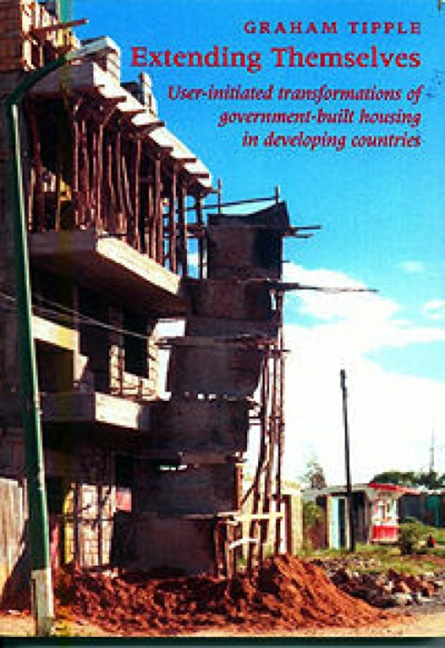 Extending Themselves
Extending Themselves Book contents
- Frontmatter
- Contents
- Acknowledgements
- 1 Introduction
- 2 The housing squeeze
- 3 More than just a dwelling
- 4 The financial element: transformation as an investment
- 5 Sustainability issues
- 6 The transformation process
- 7 The case for transformations
- 8 Policies for enabling transformations
- Appendix 1 Transformations in Bangladesh
- Appendix 2 Transformations in Egypt
- Appendix 3 Transformations in Ghana
- Appendix 4 Transformations in Zimbabwe
- Appendix 5 An assessment of the decision to transform
- References
- Index
Appendix 3 - Transformations in Ghana
- Frontmatter
- Contents
- Acknowledgements
- 1 Introduction
- 2 The housing squeeze
- 3 More than just a dwelling
- 4 The financial element: transformation as an investment
- 5 Sustainability issues
- 6 The transformation process
- 7 The case for transformations
- 8 Policies for enabling transformations
- Appendix 1 Transformations in Bangladesh
- Appendix 2 Transformations in Egypt
- Appendix 3 Transformations in Ghana
- Appendix 4 Transformations in Zimbabwe
- Appendix 5 An assessment of the decision to transform
- References
- Index
Summary
Introduction to Asawasi and Suntreso, Kumasi
Kumasi is the second largest city in Ghana and capital of the former Asante Empire. Founded at the beginning of the 18th century, it was devastated by the British at the turn of the 20th century only to be rebuilt on the same site. Little of the traditional culture was destroyed in the colonial period; the Asantehene (king of the Asante people) resides in the Manhyia Palace, close to our Asawasi study area, and the traditional system of land-holding and loyalties have survived almost unchanged.
The population statistics for the city are subject to some disagreement, largely owing to a very low figure from the 1984 census. The author estimates that in 1990 there were about 800,000 (extrapolated from Tipple's 1986 data), but the 1984 census (Ghana, 1987) shows 490,000 in 1984 and suggests that there were only about 600,000 people in the city in 1990.
Compound houses dominate Kumasi (57 per cent of houses in 1986). When completed, they are roughly square on plan with seven to 12 rooms per storey opening off a central courtyard. As over 70 per cent of households occupy one room, and mean occupancy rates in the city are in excess of three persons per room, single-storey compounds tend to accommodate 20 to 30 people. Multi-storey compounds (16 per cent of houses) contain a mean of 17 rooms (Malpezzi et al., 1990).
Non-compound housing tends to be in the form of bungalows or two-storey buildings set in relatively spacious plots. Though non-compound types constitute 43 per cent of houses, their small size relative to compounds reduces the number of people for whom they provide accommodation.
Although there is nothing inherent in the compound form to generate this, residents of the compound houses tend to occupy single rooms and have particularly poor access to services. In 1986, only 12 per cent of households in Kumasi (almost all of who are in non-compound housing) had a toilet that was not shared with other households and 30 per cent had no access to a toilet in the house (and most of these were in compounds). Owners have tended to have much better access to services than other tenure groups, 46 per cent having exclusive use of a toilet and only 14 per cent having none (Malpezzi et al., 1990).
- Type
- Chapter
- Information
- Extending ThemselvesUser Initiated Transformations of Government-built Housing in Developing Countries, pp. 243 - 287Publisher: Liverpool University PressPrint publication year: 2000


